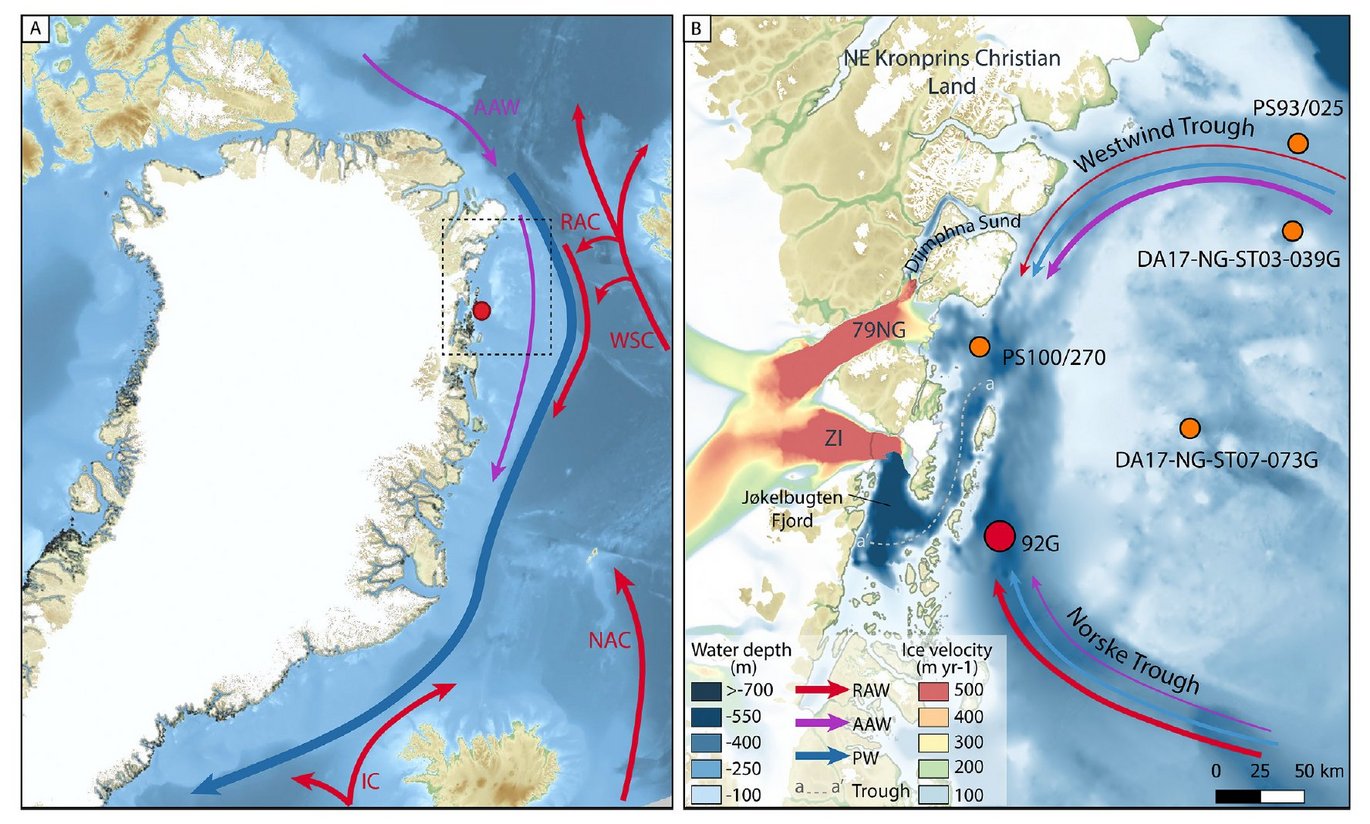Linkages between ocean circulation and the Northeast Greenland Ice Stream in the Early Holocene
New publication from Joanna Davies, Anders Møller Mathiasen, Kristiane Kristiansen et al.

Abstract:
The melting of marine terminating glaciers in Northeast Greenland is a visible sign that our climate is changing. This melt has been partly attributed to changes in oceanic heat fluxes, particularly warming of Atlantic Water (AW). Yet our understanding of the interaction between glaciers and the ocean is limited by the length of instrumental records. Here, we present a multi-proxy study (benthic foraminifera assemblages, CT scans, grain size, XRF, and stable isotope data) on core DA17-NG-ST08-092G, located 90 km east of the Northeast Greenland Ice Stream (NEGIS). Whilst the exact timing of deglaciation is uncertain, it is certain to have occurred at least as early as 12.5 ka cal BP, and likely before 13.4 ka cal BP. The inflow of AW may have played a role in the seemingly early deglaciation on the Northeast Greenland continental shelf. Following deglaciation, the site was overlain by an ice shelf, with AWand Polar Water (PW) flowing beneath until 11.2 ka cal BP. The NEGIS briefly retreated westwards between 11.2 and 10.8 ka cal BP before our site returned to glacier-proximal conditions dominated by colder subsurface water and persistent AW flowing beneath (10.8e9.6 ka cal BP). Between 9.6 and 7.9 ka cal BP the NEGIS retreated westwards; there was a continued presence of AWand PW at the site. A drastic shift in ocean circulation occurred at 7.9 ka cal BP, with a decline in AW flow and dominance of PW flowing beneath perennial sea ice. During the Late Holocene, there was return of AW and likely breakup of perennial sea ice. © 2022 The Authors. Published by Elsevier Ltd. This is an open access article under the CC BY license
